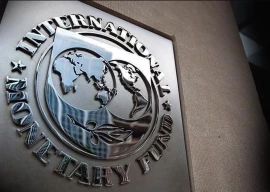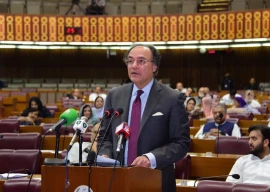
We can, of course, agree that a show of national solidarity to the enemy and personal empathy for the grieving is expected of great nations at such moments. Rebounding from tragedy is, after all, the proven test of greatness. There is, though, another test of greatness as well: learning from past mistakes. On this front, however, American greatness melts like candle wax.
By now, we all know the post-9/11 story by heart. First to come was the Afghan war to hunt down Osama bin Laden and destroy al Qaeda. Bin Laden escaped, only to be discovered 10 years later in Pakistan. The facts surrounding the Navy Seal mission that took him out remain impressively obscure. All we know is that somewhere in the deep blue sea floats a six feet-plus body of a man who was given a reverential Islamic burial after being shot in the face. And while Afghanistan was being bombed, a few nobles in the White House or some faraway satanic retreat suddenly decided to bomb Iraq as well. The pretext for this war were WMD — of which there was no credible evidence — along with rumours of secular socialist Baathist Saddam’s links to militant extremists or al Qaeda — and who can deny the obvious connection here. The same Saddam, by the way, who was, previously, supplied chemical weapons by America to take on the Ayatollahs in Iran. It must be conceded, though, that constructing this whole parable of WMD and al Qaeda’s presence in Iraq was an exercise in creative ingenuity and its architects deserve due credit on this front. What happened later is no news to anyone. The Americans went in for WMD, and came out with oil. Not the worst of arrangements, of course. Around that time, phrases like ‘patriot’s act’ and ‘preemptive war’ reverberated on American airwaves. If this paranoid America were a person, he would be a ridiculous fellow; a passive aggressive freak. A man who smiles nervously at passers-by while constantly looking over his shoulder, carrying a pocket knife in one hand and a candy bar in another.
Anyhow, moving on, Saddam was hanged and most of the former Baathists were thrown in prisons, where routine water-boarding and rectal feeding kept their boredom at bay. It is said that the current Islamic State leader, Baghdadi, was brutally antagonised in some such prison. But apart from daily torture, these prisons — much like Ivy League college campuses — served as ideal recruitment platforms, only they weren’t looking for ambitious Wall Street bankers, but rather aspiring radicals thirsting for American blood. Not ones to stop and deliberate, Americans pushed forward with troop surge in 2007. By now deeply frustrated with the lack of any tangible progress, they threw in the ‘divide-and-rule’ trump card, fostering a sectarian conflict. And who doesn’t like a cherry on top of a ticking grenade. So the Americans planted Nouri al Maliki as a replacement for Saddam, at a point when sectarian resentments were at their peak.
Of course, no tragedy is ever complete without a cast of villains. And while the contenders were many, Paul Bremer definitely takes the cake. With men like Wolfowitz, Cheney and Rumsfeld in contention, this is a remarkable feat. By firing all ex-Baathists and leaving thousands unemployed, Bremer practically laid the runway for the militant airbus to take off. And take off it did. Violent extremists turned on Maliki and fighting escalated. And while American troops played whack a mole with al Qaeda, ultimately killing Zarqawi, in due course, there emerged a unique band of atavistic nihilists, calling themselves the ‘Islamic State’.
While all this madness ravaged the plains of Iraq, many Iraqis fled. Almost 1.5 million of them sought refuge in Syria. This is around the time when Syria was already experiencing an acute drought that resulted in massive crop failure, causing a dramatic hike in food prices, thereby necessitating an exodus of villagers to urban areas. A sudden deluge of Iraqi refugees only exacerbated the situation. This was the backdrop against which occurred the rise of the Syrian revolt in opposition to Assad during the Arab Spring.
It was here in Syria where IS gained traction and ascendancy. Backed and weaponised by America, the radicals (some of them part of IS today) came into a perverse union with the Free Syrian Army against Assad’s regime. But Assad was no less brutal in his repression. Allied with Iran, Hezbollah and Putin, he cluster bombed cities and massacred thousands. Today the Syrian death toll hovers around 220,000, with more than seven million people (by conservative estimates) internally displaced and almost four million refugees seeking respite from this conflagration — making this the worst refugee crisis since the Rwanda conflict. Ultimately, how things unfold in Iraq and Syria remains to be seen. What we can say for sure is that evil has no specific nationality, ethnicity, race, religion or creed. What it does have is a shared DNA. A DNA, one might add, not beholden to the limits of space and time. Because this is a transcending menace, surfacing at once in the bloodied plains of Levant, the rocky ridges of Tora Bora, and the pallid chambers of the White House. Meanwhile, all we have are pictures and narratives. They say a picture is worth a thousand words. Where we can all agree is that the pictures of burning rubble in Manhattan and dead Syrian refugees in faraway lands are worth a lot more.
Published in The Express Tribune, September 16th, 2015.
Like Opinion & Editorial on Facebook, follow @ETOpEd on Twitter to receive all updates on all our daily pieces.













1725434334-0/Untitled-design-(35)1725434334-0-270x192.webp)





COMMENTS (4)
Comments are moderated and generally will be posted if they are on-topic and not abusive.
For more information, please see our Comments FAQ